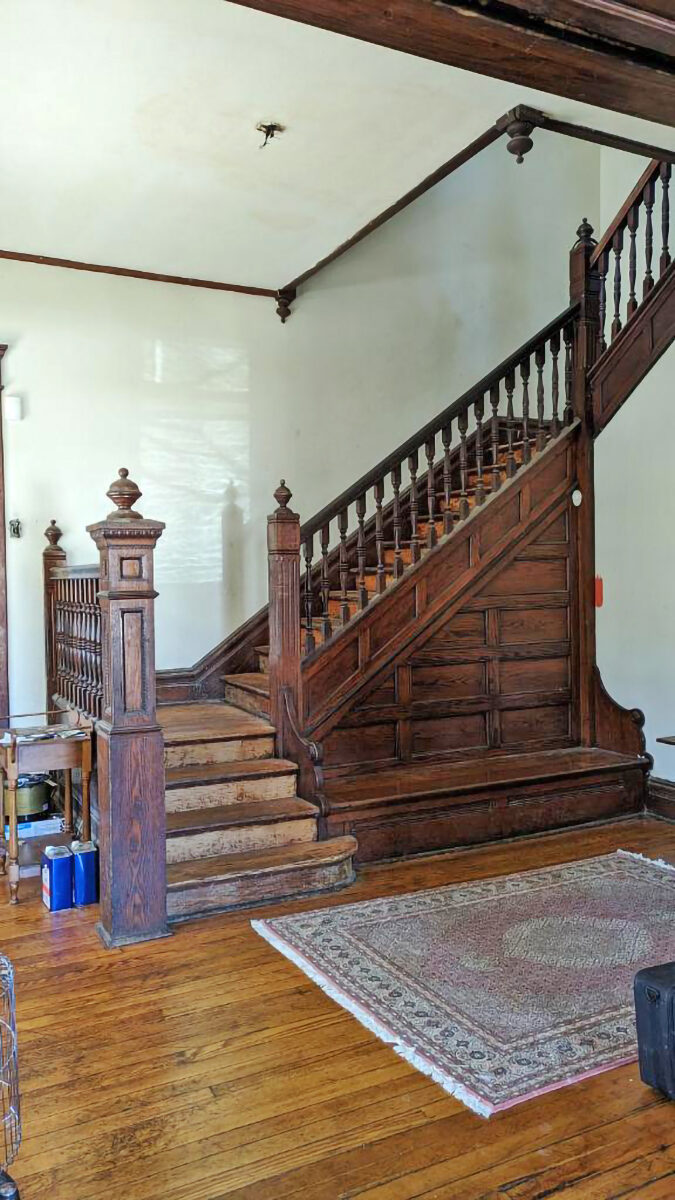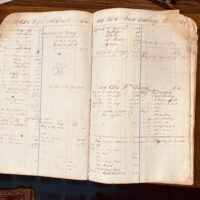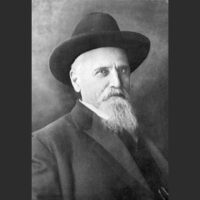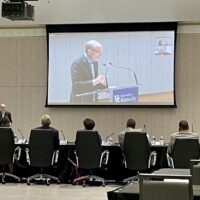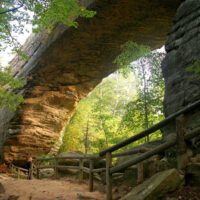“Here too was Miss Margaret Dalton who had since become Junior member of the Dalton Bros.,” published the 1913 Hopkinsville High School yearbook’s glib prediction for Margaret Dalton’s future. On an evening in early June, Margaret and 23 classmates walked across the stage at Union Tabernacle and claimed their diplomas. Her parents and 9-year-old sister, Sarah, attended the graduation. So did Margaret’s future husband, Emmett, who brought her flowers.
It was not Margaret, however, but Sarah, whose destiny lie with the brickyard.
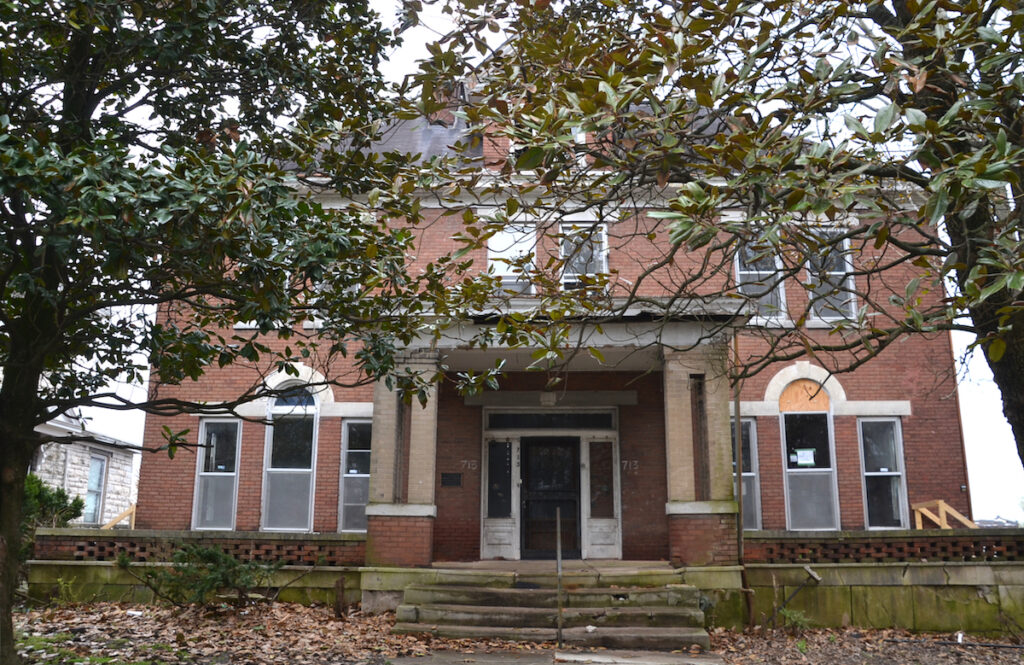
The Dalton cottages
The backdrop to the formative years of Monroe and Carrie Dalton’s two children, Margaret and Sarah, was 713 E. Seventh St. When the Dalton family moved in, Margaret was 12 and Sarah was 3.
Both girls were probably born just one block up the street from our house, in Monroe and Carrie Dalton’s first house. In the early 1890s, Monroe built nearly identical brick cottages side by side on the south side of East Seventh. One was for his family, and the other was for his mother. Sarah said she was born in this cottage. She was so young when she moved into our house that I doubt she had any childhood memories of her first home.
In 1906, Monroe Dalton received an unexpected offer for his cottage that was too good to refuse. In December, he bought the lot on which our house stands, and you know the rest of the story.
Today, both Dalton cottages are gone. Where they once stood is now the playground for Sts. Peter & Paul Catholic Church. In fact, this entire stretch of East Seventh Street, from the alley up to Belmont Street, is now nearly devoid of historic homes, except for the two brick four-squares owned by the Catholic Church and a frame four-square on the north side of the street.
A downtown childhood
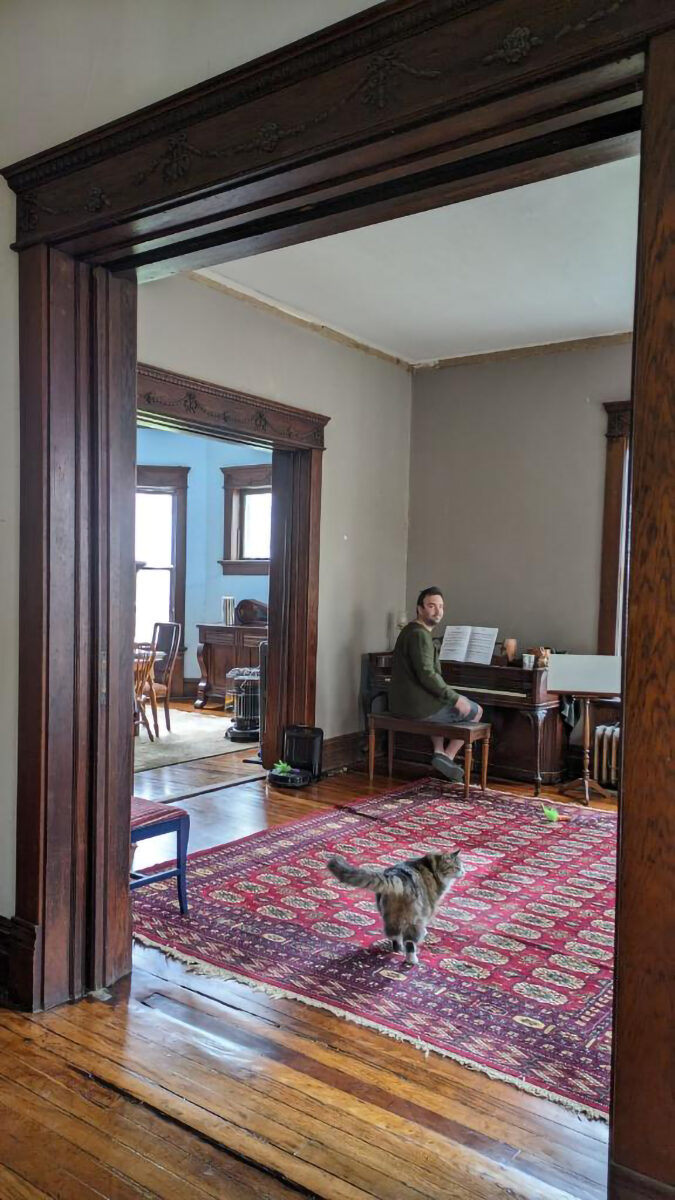
One of the things about the Dalton House that first appealed to Brendan and me was its proximity to downtown Hopkinsville. I commute to Nashville at least three times a week and am adamant about walking to eat, shop and play when home. The Dalton House is just outside downtown, less than two blocks from the train tracks.
This neighborhood is as walkable now as it was when the Daltons lived here. Like most turn of the century Hopkinsville residents, the Daltons typically walked around town. Sarah Dalton described herself as “a tagalong,” following the much more grown-up Margaret out. They frequented Frankel’s Busy Store, their father’s office on the corner of Seventh and Virginia streets, from which they watched parades, and may have paid the occasional illicit visit to Paradise Cafe Ice Cream Parlor, an establishment deemed unsanitary by their mother.
Carrie Dalton had other instructions for her girls, too. They were not to look through the swinging doors of the saloons they passed on their way into town! She made all of Margaret and Sarah’s clothes, but they visited department stores like Anderson’s to get the material and their shoes.
The Buick
On special occasions or if they were traveling beyond walking distance, the Daltons rolled out the Surry, a two-seated carriage. Monroe Dalton also had a low, two-seated buggy, which he drove around town to superintend building projects. Between 1910 and 1912, the Dalton Bros. did the brick masonry for the new Hopkinsville High School on Walnut Street, and Sarah recollected her father taking her to the school. They rode an elevator up to the top of the building so that Sarah could look out across all of Hopkinsville.
In the late 1910s, Monroe’s nephews Latham Davis and Wesley Dalton took over the Ideal Motor Company. Monroe and his brother George felt duty-bound to support their nephews by buying cars from them. This was how Monroe came home with a Buick that he had no intention of learning how to drive! Carrie and Margaret likewise opted out. Teenage Sarah decided there was no reason why she shouldn’t learn how to drive the car. And from then on, she chauffeured the Dalton family in their Buick around Hopkinsville.
The music room
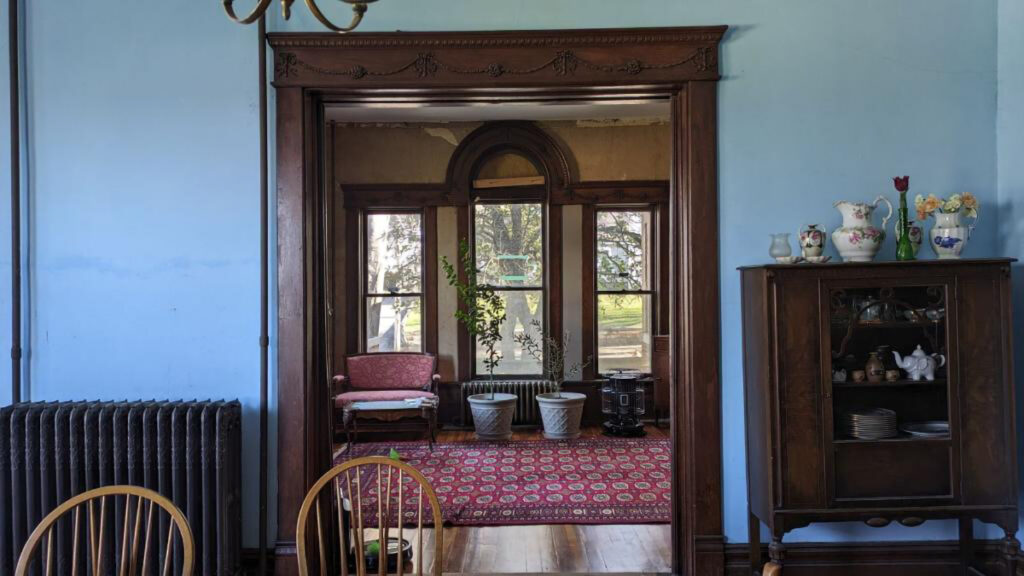
The room in the Dalton house that I associate most with both Margaret and Sarah Dalton we call the music room. The Daltons probably just called it their parlor. It’s a front room on the first floor, with a grand Palladian window. One set of double pocket doors separates it from the entry hall, another pair from the dining room. These three rooms formed the heart of the entertaining space in the Dalton house.
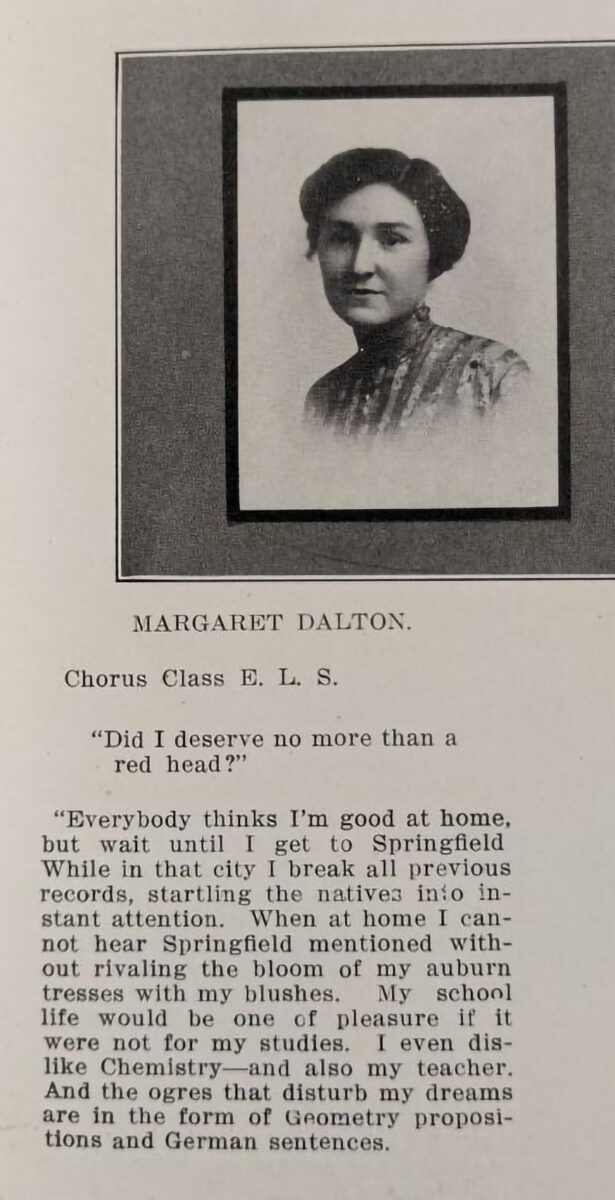
We began calling this the music room almost immediately simply because there happened to be a piano in it when we bought the house. Since then, we’ve discovered that the Daltons also had a piano, though not the instrument we inherited.
While the Dalton girls seem to have been a classic study in sibling opposites, Margaret and Sarah did have one thing in common. They were both musicians. Margaret was a well-known vocalist in Hopkinsville. In April 1917, she participated in a benefit for the library. The theme was folk songs from the Kentucky mountains, and she sang the ballad “Barbara Allen,” a ballad famously about a hard-hearted lover who dies of grief.
Sarah attended the Music Conservatory at Ward-Belmont College in Nashville, a prestigious school for girls. She took the train down to Nashville at the beginning of the week and returned home at the end. The train trip took about an hour and a half. This is, consequentially, much shorter than many of my commutes to Nashville!
I haven’t discovered what instrument Sarah Dalton specialized in, but I think there is a good chance it was piano. With a vocalist and a pianist in the family, Monroe and Carrie Dalton would have placed their piano prominently in the parlor, where their talented daughters could perform to entertain and impress visitors.
Margaret Dalton Haydon
Less than two weeks after her performance of “Barbara Allen,” Margaret became engaged to Emmett Haydon. They married that June, and the wedding took place here at the Dalton house. The newspaper described the entire first floor of the “commodious residence” as being decorated in white and green. Elizabeth Davis, Margaret and Sarah’s cousin, played the piano and sang. Thirteen-year-old Sarah was a flower girl. Rev. Lewis Powell, the minister from the Methodist church, conducted the ceremony.
Photographs from this wedding must exist, but sadly none have surfaced thus far in my search. Margaret Dalton must have made a grand entrance, descending the magnificent staircase. After the wedding, she and Emmett went camping for a week, then returned to her parents’ house. On Aug. 1, 1918, Margaret Caroline Haydon was born here.
The Haydons moved up the hill to 1005 E. Seventh St. between 1920 and 1922, into a little brick house that became their longtime home. Emmett served a short stint as vice president of Dalton Bros. Brick Co. before joining Bass & Co., where he stayed for most of his career. They had another daughter in 1923, who they named Sarah Elizabeth, after her aunt.
Sarah Dalton Todd
Shortly after Margaret moved out, Sarah Dalton married James Buford Todd. Dalton Bros. Brick Co. descended through Sarah’s line, with her husband and then son eventually running it. Sarah and Buford had three children — James Jr., Sarah and Patricia. They did a short stint in Fort Worth, Texas, but quickly decided to move back to Hopkinsville. By 1930, they had moved into 1914 S. Main St., where Sarah remained for the rest of her life.
Sarah Dalton Todd is well-remembered here, passing away only in 1999. Numerous people have shared tidbits of their memories of her with me. Sarah even wrote a memoir and was interviewed in an oral history in the 1990s. Much of this information, as well as technical, nitty gritty details about the operations of Dalton Brick, comes from that interview. Sarah knew firsthand. She had served as Dalton Bros. Brick Co.’s vice president.
Bringing everything home
I’ve often wondered if anyone has died in this house. But until now, I hadn’t even asked the question whether anyone had been born here. Until the mid-20th century, the home, not the hospital, was where most people entered and left this world.
As a historian, it’s easy to look at people’s lives in terms of dates. Birth dates, death dates. But it’s everything in the middle, all of our normal, daily activities — the things that no one thinks are important enough to write about or mention — that really matter. In this light, places become precious when you start to see these imprints. This house has a grand tradition of daily life.
